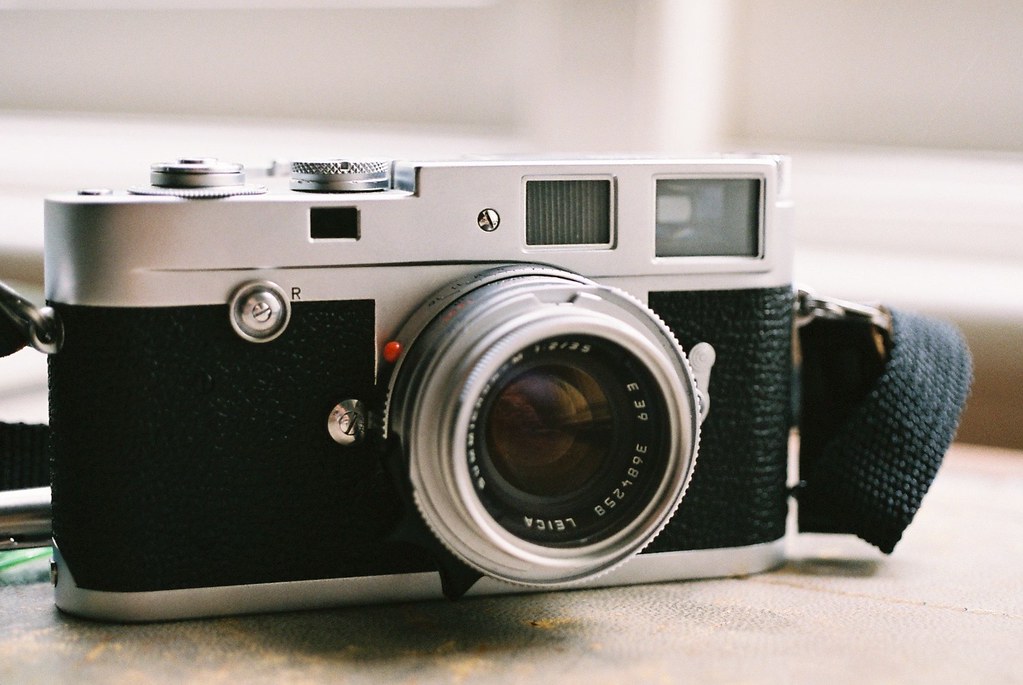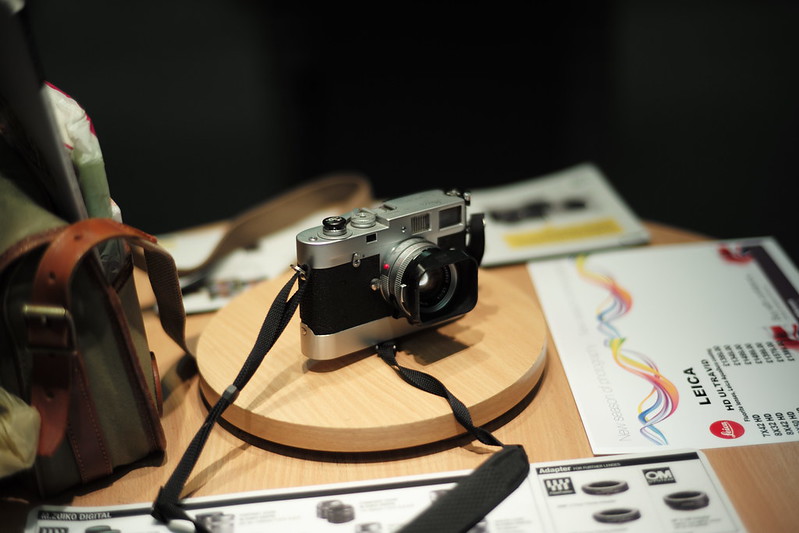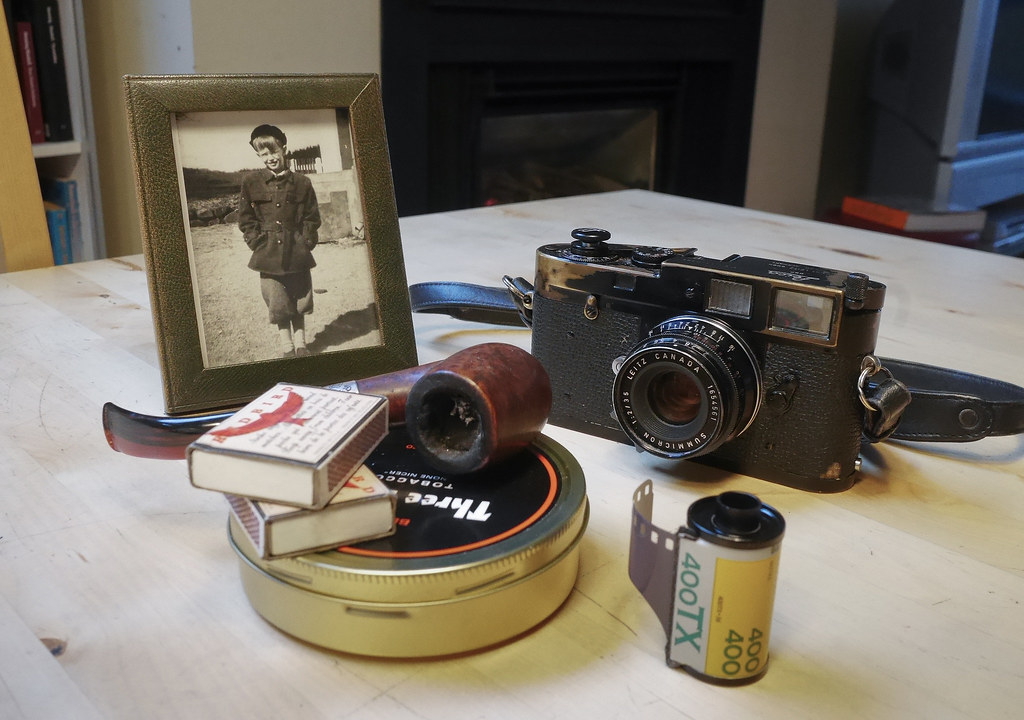Richard G
Veteran
Recently there was a very nice M3 review linked here on RFF. It reminded me that I had had for some time an idea to put down my thoughts on the M2. The recent sad news and Tom Abrahamsson's love of the M2 and his championing of it inspired me to get to work.
The 1958 brown leather every ready case is not quite brown, but has a burgundy undertone. It has a darker less cheerful look than say the pure brown Rollleiflex case. The leather has a hard, flat firmness to it. The colour of the lining is hard to call too, a bluey grey. The unassuming package already signals that something not quite ordinary lies within.
Out of the case the M2 is an imposing machine, and yet understated. It has the look of one who does not age, the lines not much different to a modern M9-P and very close to the MA and the MP. The M3 lines are anchored in the 1940s, with the bumps around the glass windows and the band on which the RF window sits, art deco style. The M2 lines are purer and simpler and the design sits happily anywhere in the century, even in this century, or an earlier one with that wonderful external frame counter like some fine 17th century mechanical contrivance. The finish of a mint M2 is if anything better than the modern cameras, especially the lustre of the chrome and the shine of the polished chrome of the ring around the shutter button. The mating of this perfect chrome sheen to any modern chrome lens also erodes a confident dating of the camera. The Vulcanite does not shine like the modern versions and its imitations, and its dull non-reflective surface only enhances the chrome and increases the sense of the M2’s serious purpose as a tool.
The advance lever is an exceedingly elegant set of curves. In operation it is very sweet. In use, or is it perhaps in storage, the end of the lever dents the shutter speed dial. Perhaps this is only in the hands of those who allow the lever to slap back home and hit the shutter speed dial. The rewind knob with its sharp knurling, smooth elevation and clutched operation is spare and elegant and efficient and so perfect in conception and operation that it was revived for the modern film Leicas. It is also a key component when shooting the film, as the rotation of the central post’s polished chrome top and two red dots signals that the film is definitely advancing.
The viewfinder is astonishing. Some photographers never really get the Leica or its rangefinder and are deeply underwhelmed by the M2 or any rangefinder camera. Once the marvels of parallax corrected frame lines are understood, including especially maintaining sight of the field outside the frame, the joy of the M2 VF eclipses all the others, the 50 frame lines alone, or the 35 or the 90.
The shutter button is perfect. It travels smoothly down and trips the shutter some way before the bottom of its travel. Squeezing off a shot with a 1/4s shutter speed is so much more achievable with the M2 than with the M6 or the M9-P as the electronic contacts for the meter and other requirements interfere with the travel and the button must descend lower to trip the shutter. The shutter sounds different for every shutter speed. The 1/15s and 1/30s are the sweetest.
The E Leitz Wetzlar 1958 Leica M2 differs hardly at all from the latest Leica AG film camera, the MA, released nearly 60 years later. Holding this ageless machine, cut to the bare essentials of photography, quiet, dense, precise and clear, offers a liberation from mental and physical clutter, allowing the photographer to look and see and make a photograph with the minimum of fuss.
 F1000034 by Richard, on Flickr
F1000034 by Richard, on Flickr
The 1958 brown leather every ready case is not quite brown, but has a burgundy undertone. It has a darker less cheerful look than say the pure brown Rollleiflex case. The leather has a hard, flat firmness to it. The colour of the lining is hard to call too, a bluey grey. The unassuming package already signals that something not quite ordinary lies within.
Out of the case the M2 is an imposing machine, and yet understated. It has the look of one who does not age, the lines not much different to a modern M9-P and very close to the MA and the MP. The M3 lines are anchored in the 1940s, with the bumps around the glass windows and the band on which the RF window sits, art deco style. The M2 lines are purer and simpler and the design sits happily anywhere in the century, even in this century, or an earlier one with that wonderful external frame counter like some fine 17th century mechanical contrivance. The finish of a mint M2 is if anything better than the modern cameras, especially the lustre of the chrome and the shine of the polished chrome of the ring around the shutter button. The mating of this perfect chrome sheen to any modern chrome lens also erodes a confident dating of the camera. The Vulcanite does not shine like the modern versions and its imitations, and its dull non-reflective surface only enhances the chrome and increases the sense of the M2’s serious purpose as a tool.
The advance lever is an exceedingly elegant set of curves. In operation it is very sweet. In use, or is it perhaps in storage, the end of the lever dents the shutter speed dial. Perhaps this is only in the hands of those who allow the lever to slap back home and hit the shutter speed dial. The rewind knob with its sharp knurling, smooth elevation and clutched operation is spare and elegant and efficient and so perfect in conception and operation that it was revived for the modern film Leicas. It is also a key component when shooting the film, as the rotation of the central post’s polished chrome top and two red dots signals that the film is definitely advancing.
The viewfinder is astonishing. Some photographers never really get the Leica or its rangefinder and are deeply underwhelmed by the M2 or any rangefinder camera. Once the marvels of parallax corrected frame lines are understood, including especially maintaining sight of the field outside the frame, the joy of the M2 VF eclipses all the others, the 50 frame lines alone, or the 35 or the 90.
The shutter button is perfect. It travels smoothly down and trips the shutter some way before the bottom of its travel. Squeezing off a shot with a 1/4s shutter speed is so much more achievable with the M2 than with the M6 or the M9-P as the electronic contacts for the meter and other requirements interfere with the travel and the button must descend lower to trip the shutter. The shutter sounds different for every shutter speed. The 1/15s and 1/30s are the sweetest.
The E Leitz Wetzlar 1958 Leica M2 differs hardly at all from the latest Leica AG film camera, the MA, released nearly 60 years later. Holding this ageless machine, cut to the bare essentials of photography, quiet, dense, precise and clear, offers a liberation from mental and physical clutter, allowing the photographer to look and see and make a photograph with the minimum of fuss.
 F1000034 by Richard, on Flickr
F1000034 by Richard, on Flickr



